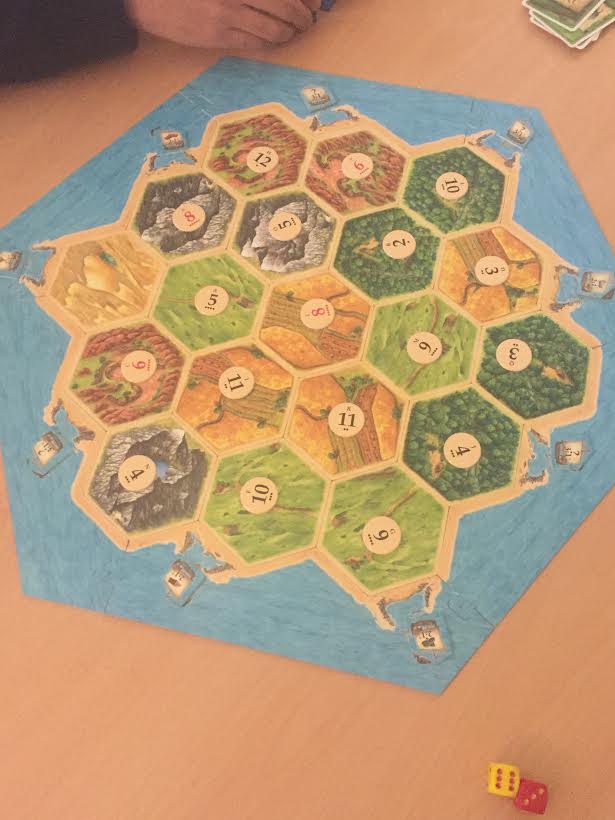So you have decided to play Catan, perhaps you have even had a couple of games already, but now you are looking for what other players do. I found that my competitive nature makes me look through reviews for the tactics that other players use to get the best start – as I couldn’t always find strategies, I thought I would add the tips and tactics that I use in game.
Catan is a classic board game, heavier in luck than many modern board games, but a great game for those new to modern board games. The game requires you to get to 10 points to win – 1 point for a town, 2 points for a city, and 2 points for either the longest road or largest army. Throughout the game you draw resources based on where your towns/cities are built and what dice are rolled. You use the resources to build the towns/cities/roads or draw cards.
Starting Tactics:
5-9; The dice rolling should create a relatively normal distribution however its common that the game doesn’t last long enough for this to pan out. Staying on the tiles marked with a 5-9 dice means that you will get a relatively normal distribution. During the game you will need to stray outside this, but doing so early will likely curtail your potential to build out.
Build to the coast; The towns that you place at the start of the game will have a free road next to them. Trying to build at the start is tricky – you want to get places on the board that allow you to build out quickly and to worthwhile location. However, so is everyone else and they will likely block you off! The tactic that I find works the best is to build such that there is a two road gap to the coast – filled by your free road and the first one you build. It’s very rare for a starting town to be placed on the coast and this means you should have a good run on the second town you want. Second tip to this though is that this coast city should ideally be between two tiles and not on the edge of one. This strategy also gives you a two road gap to another coast edge between two tiles.
Don’t focus on Wood or Bricks; It’s so tempting to focus on building roads and towns and they need wood and brick. However, getting drawn to this is not a good start. Wheat, for example, is present in towns, cards and cities making it much more important! However, this isn’t a perfect rule; if wood or brick are in short supply then you can extract their value from trade.
During The Game:
Get Cards!; When you play this game it’s a simple bit of maths to tell you that getting 4 cities and two towns is the shortest way to get to 10 points from just your buildings – and that’s too many! So you will need cards during this game. Either because they provide a victory point you can hide (and this is good because people target the leader), or because you get the biggest army, or because you build free roads to go for longest road. Don’t worry about getting too many knights, in the long run this is helpful.
Getting to 10 points; So you want to win and cities might not be the way to do it. Perhaps the longest road – with your two free roads, three additional roads will get you to the extra two points (assuming no-one else does). However, if you built to the coast it may be hard to link your starting cities. So perhaps focus on drawing cards – after all the cards will get you one off hidden victory points and knights – 3 knights are 2 points. Generally if you are going for cards don’t worry about roads. So that’s 3 cities, two towns and a 2 point bonus… that’s the most likely way I have found (subject to how much stone there is).
Working The Robber; Perhaps the key advice to this game. The group should use the robber generally to hold back the leader but don’t give everyone an obvious target! To do that you should avoid being the obvious leader and you should definitely avoid putting too many cities & towns around one tile while others are left with just one. A balanced board is one where the robber will move between many locations. An unbalanced board will see the robber move back to the same location time and time again – and if that’s you then you won’t be getting any resources! Also, building next to other players can make (a) a harder decision for those players to rob that tile and (b) encourage the other player to use their knight cards to help you! Last tip – when placing the robber do look at whether the player has knight cards. If the game is balanced, place the robber somewhere it won’t be sent back against you! If everyone has cards then play it to the player to your right – the player who will take longest before getting a turn!
So that’s it – if you use these please let me know if you find them helpful and what else you do to add to these! Good luck gaming!
